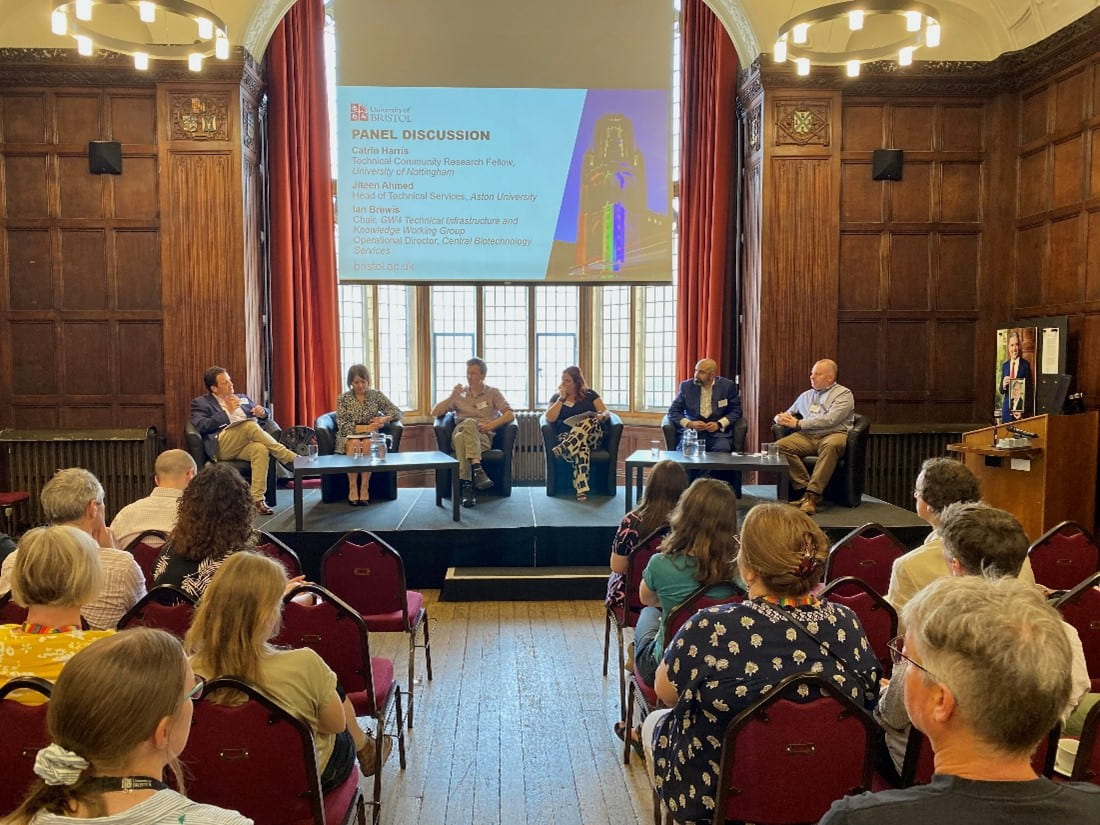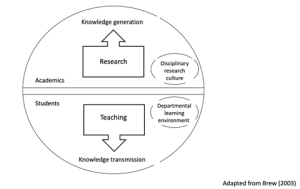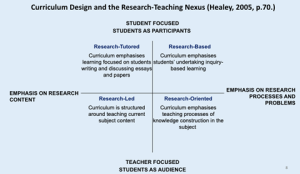Research culture can mean a lot of different things to different people. From improving diversity across the University to enabling better work through infrastructure improvements, much of our work focuses on making things better. However, celebrating the fantastic people and the work being carried out across our institution is also vital to research culture.
In June, we held an event to celebrate our technical staff at Bristol and further afield. Technical staff facilitate and support research and enterprise while also playing a significant role in implementing our education programmes for undergraduates and postgraduates.
As Andy Connelly, one of our guest speakers, noted, we were inspired by Dickens’ A Christmas Carol at this event, hearing three excellent and informative talks on Technicians of the Past, Present and Future. Read on to hear more about each speaker’s background, what we learned, and some of the key takeaways from our interactive panel discussion.
Nik Okgyzko – UKRI People and Teams Action Plan
Nik is part of UK Research and Innovation (UKRI), which was launched in 2018 and is the largest public research funder in the UK, bringing together seven disciplinary research councils, Research England and Innovate UK, and funding £7 billion per year into the research system.
Technicians are a vital part of our national research community: they underpin and support our investment in research; they design, build and maintain a significant portion of our infrastructure; and they support our research outputs by offering expertise and often carrying out research itself.
Technical roles are incredibly diverse, from operating across the arts and humanities to supporting some of the most complicated scientific endeavours. UKRI supports technicians in four key ways:
- Ensuring technicians are recognised and rewarded fairly and effectively by employers
- Assessing what is rewarded and invested in within the technical career pathway
- Creating clear expectations and assurances concerning where their investments go
- Providing clear engagement as to how they support the research sector
Andy Connelly – Technicians of the Past
Andy’s research into the history of technicians was inspired by his career as a technician, where he didn’t necessarily feel valued compared to the work he was carrying out.
For most of the history of science, technicians have been invisible because they tended to be servants. During the 17th-century era of the scientific revolution, technicians were referred to as lab rats, assistants or servants. Part of these roles involved giving up autonomy and credit for their work, operating instead as extensions of their masters’ wills.
This started to change during the 19th century, as a number of large scientific institutions created a career pathway for technicians, recognising them as employees and offering some promotion opportunities. Michael Faraday, today a household name, started his scientific career as a technician. He attended and assisted in lectures supporting instrument and apparatus setup, and was responsible for cleaning, maintenance and repair. He also took on the role of valet when his master’s valet was unwell, further emphasizing the role of technicians as servants.
In the 20th century, there was a significant uptick in technical staff. Freda Collier, for example, developed photographs that became a key piece of evidence on the structure of DNA. Her role was recognised in the BBC’s 1987 Horizon documentary.
Catrin Harris – Technicians of the Present
The Midlands Innovation TALENT programme aims to advance both status and opportunity for technical skills, roles and careers in UK higher education and research. As the Research Fellow for TALENT, Catrin researches the technical community, the environments they work in and the challenges they face.
In September 2022, building on the work of Wellcome and ARMA on research culture, MI TALENT published Research Culture: A Technician Lens, which explores research culture from technicians’ perspectives. Some interesting statistics and takeaways from this work include the following.
- Only 30% of technicians felt included in the research community and only 37% of technicians felt valued as a member of the research community.
- 63% of technicians and 52% of non-technical staff and students do not think technicians are appropriately credited for their contributions to research.
- There still exists an “us and them” culture between academic researchers and technical staff. Technical staff reported a number of issues such as negative attitudes, communication issues, bullying and poor treatment, and scapegoating when projects are unsuccessful or hit roadblocks.
Career progression is often highlighted as a challenge for technical staff. A lack of clear career pathways means that technicians often have to move to management positions, resulting in a loss of technical knowledge and skills.
The full report makes for fascinating reading and highlights how we can improve the quality of our technical staff’s professional lives and career opportunities, and the sectoral shifts that need to happen in order to facilitate this.
Kelly Vere – Technicians of the Future
Kelly has been a technician for several years and is trying to shift the culture around considering technical colleagues and the skills they offer. The aim is to ensure our technical community is respected and valued and can work within a supportive and inclusive research environment. One of the first key pieces of work is a pledge to support the technical profession – the Technician Commitment – which so far has attracted sign-ups from over 115 organisations and institutions.
An understanding of the strategic position of our technical workforce is vital. To that end, the TALENT Board of Commissioners is made up of technical staff, academic staff, VCs and PVCs, directors and CEOs, ensuring broad representation. The TALENT Commission report looks at a vision of the future in which technical careers are respected, admired and aspired to. The key principles include:
- strategic planning for sustainable technical skills and investing in technical career pipelines;
- recognising the diversity of technical roles and reporting accurately and transparently on the demographic information of technicians;
- creating a diverse and inclusive technical community which reflects the richness of society;
- making technical careers and development visible, reducing the reliance on dropping technical careers to move into management;
- giving technicians collaborative opportunities to influence decision-making, empowering technical staff to influence the future for themselves;
- inclusive policy-making and representation, recognising the significance of technical expertise.
Panel discussion

Following this fascinating journey through the past, present and future of technical staff, we welcomed our panel to the stage to take audience questions. In addition to our speakers, we were joined by Jiteen Ahmed (Head of Technical Services, Aston University) and Ian Brewis (Chair, GW4 Technical Infrastructure and Knowledge Working Group).
With a panel covering such a broad range of the technical landscape, there was plenty to discuss and lots of questions from our audience. Watch the video below to hear the full range of discussions, but here are some of my key takeaways.
- There has been a positive shift towards making technicians more visible and better supported, although there is work still needed in this space. This is a vital part of our wider research culture, ensuring that different communities within higher education have a voice and moving away from a hierarchical structure.
- There’s plenty we can do to make technical careers more attractive. Pay is naturally at the top of the list, but training, development and support are vital, in addition to more concrete methods of acknowledging the work carried out, such as inclusion in research articles.
- Developing technical staff networks and staff joining these networks helps with visibility, particularly further afield of your own institution. This is the same for institutions too – some of the greatest changes noted over the past few years have been when institutions have worked together, such as through the Technician Commitment.
What’s next for research culture at Bristol?
After a packed spring and summer of events, the University has received further funding from Research England to be spent on research culture activity, building on awards in 2021 and 2022. This is part of ongoing sectoral efforts to enhance research culture. The latest round of the Research Culture open call is now open for applicants, with a closing date of Monday, 19 September 2023. Read the full guidance on SharePoint and apply online (please note, this link will only work for University of Bristol colleagues). If you have any questions, please contact Gurjeet Kaur, Project Officer at researchculture-projects@bristol.ac.uk.



